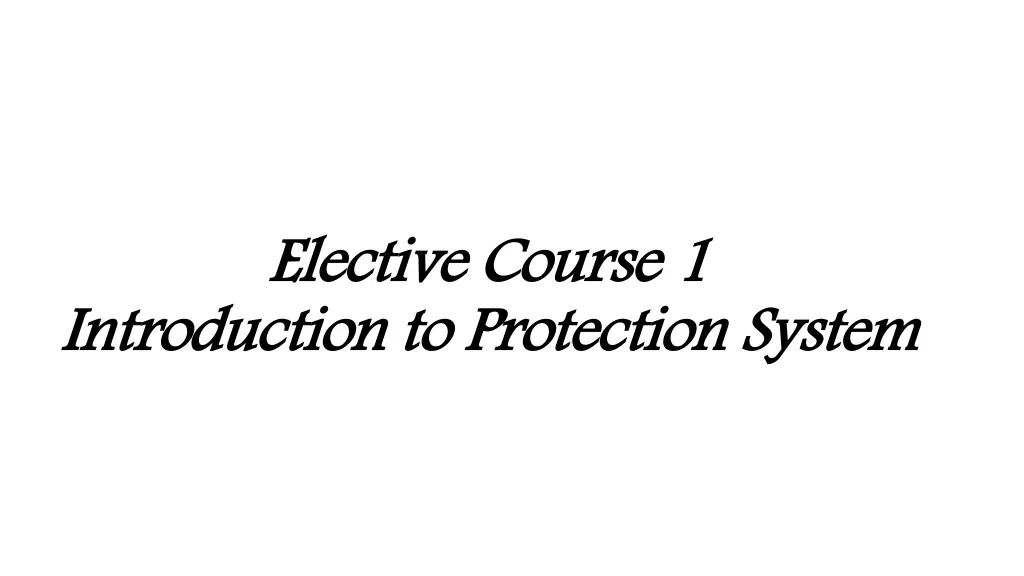
Introduction to Protection System and Types of Relays
Explore the fundamentals of protection systems and various types of relays used in initiating tripping and closing operations. Learn about protective relays, monitoring relays, reclosing relays, regulating relays, and auxiliary relays, each serving specific functions in safeguarding power systems against faults and dangerous conditions.
Download Presentation

Please find below an Image/Link to download the presentation.
The content on the website is provided AS IS for your information and personal use only. It may not be sold, licensed, or shared on other websites without obtaining consent from the author. If you encounter any issues during the download, it is possible that the publisher has removed the file from their server.
You are allowed to download the files provided on this website for personal or commercial use, subject to the condition that they are used lawfully. All files are the property of their respective owners.
The content on the website is provided AS IS for your information and personal use only. It may not be sold, licensed, or shared on other websites without obtaining consent from the author.
E N D
Presentation Transcript
Elective Course Introduction to Protection System Elective Course 1 1 Introduction to Protection System
Relays Relays Relays are the logic elements, which initiate the tripping and closing operations. There are many types of relays according to its function, input, Operating principle or structure, and Performance Characteristic.
Relays Relays Function Input Operating principle Performance or structure Characteristic
Relay Relay Functions Functions Protective Monitoring Reclosing Regulating Auxiliary Synchronizing
Protective Relays Protective Relays detect defective lines, defective apparatus, or other dangerous or intolerable conditions. These relays generally trip one or more circuit breakers, but may also be used to sound an alarm.
Monitoring relays Monitoring relays verify conditions on the power system or in the protection system. These relays include fault detectors, alarm units, channel-monitoring relays, synchronism verification, and network phasing. Power system conditions that do not involve opening circuit breakers during faults can be monitoring by verification relays.
Reclosing relays Reclosing relays Establish a closing sequence for a circuit breaker following tripping by protective relays.
Regulating relays Regulating relays Are activated when an operating parameter deviates from predetermined limits. Regulating relays function through supplementary equipment to restore the quantity to the prescribed limits.
Auxiliary Auxiliary relays relays operating in response to the opening or closing of the operating circuit to supplement another relay or device. These include timers, contact- multiplier relays, closing relays, and trip relays.
Synchronizing relays Synchronizing relays (or synchronism check) relays, assure that proper conditions exist for interconnecting two sections of a power system. In addition to these functional categories, relays may be classified by input, operating principle or structure, and performance characteristic.
